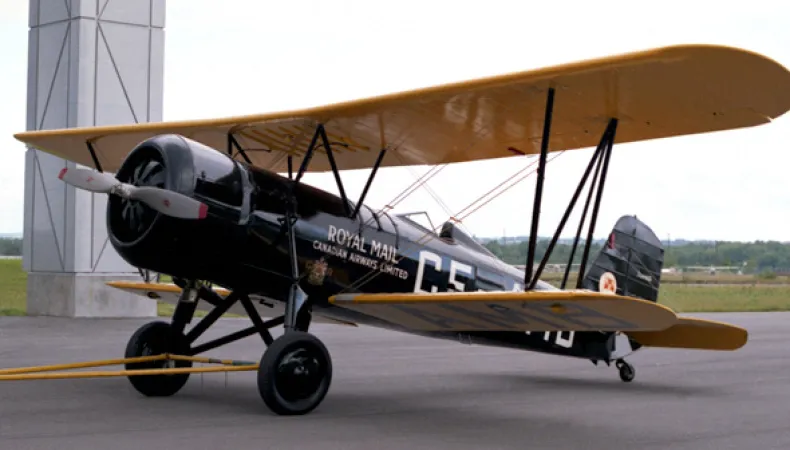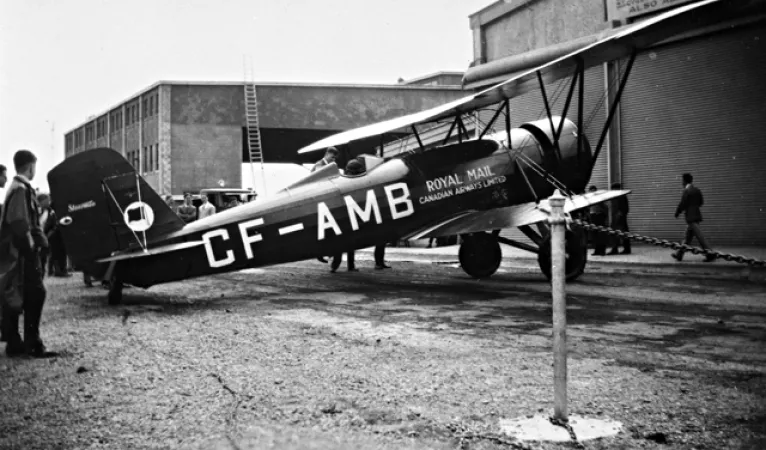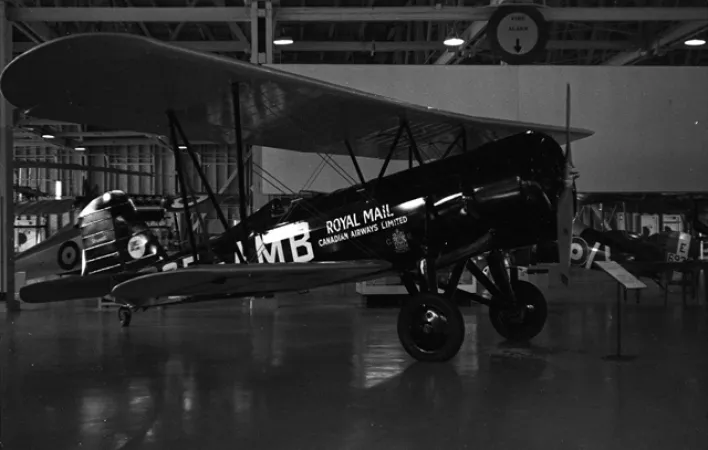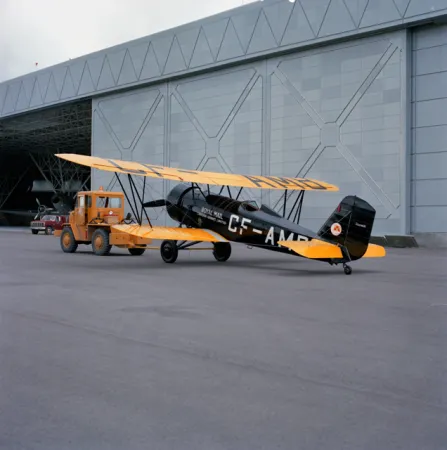
Highlights:
- A single-seater, general-purpose biplane manufactured by the Stearman Aircraft Company in the U.S., around 1930
- Developed from the Stearman 4E Junior Speedmail, but with a dedicated forward cargo compartment for mail storage
- Among the first production aircraft to use the new aerodynamically efficient NACA engine cowl, which streamlined the radial engine and reduced drag
- Only a handful of 4EMs were built; some of them were converted from 4Es
- Canadian Airways operated four 4EM mail planes on its Eastern Canada routes in the early 1930s
- Fastest aircraft in Canadian skies in its era (surpassing the RCAF Siskin fighter); considered by some the ultimate civil biplane in North America
- Claimed by company founder Lloyd Stearman to be the best aircraft he ever designed
- First flight was on September 4, 1929
Image Gallery:
History:
The Stearman 4 is considered by some to be the ultimate civil biplane in North America. The Stearman 4 was the first North American production aircraft to use the new aerodynamically efficient NACA engine cowl . In their heyday, Stearman 4s were the fastest aircraft in Canadian skies, even faster than the RCAF Siskin fighters.
Forty Stearman 4s were built. The largest fleet belonged to American Airlines. Canadian Airways operated four 4EM mailpanes on its eastern Canada routes in the early 1930s.
Current Location:
Conservation hangar for partial restoration.
Provenance:
Purchase
This Stearman 4EM was built as a 4E model in 1930. It was one of three 4Es supplied to the Standard Oil Company of California, which used it as a corporate aircraft. It was converted to a crop-duster in 1944 by Carberry Crop Dusters Incorporated of Fresno, California. The company used the aircraft until it was acquired by Dean Wilson of Homedale, Idaho, who then sold it to John Paterson of Fort William (now Thunder Bay), Ontario in January 1965. Over the next four years, Paterson restored it as a 4EM model flown by Canadian Airways.
In 1970, over the course of three days, this aircraft flew from Fort William to Rockcliffe airport, carrying commemorative mail. On arrival on September 25, it was presented to the Museum, and it has been on display since that time. It serves as a reminder of those long-ago days when, without the benefit of radio and other modern amenities, pilots donned helmets, goggles and parachutes in preparation for delivering mail.
Technical Information:
| Wing Span | 11.6 m (38 ft) |
| Length | 8 m (26 ft 4 in) |
| Height | 3.1 m (10 ft 2 in) |
| Weight, Empty | 1,113 kg (2,455 lb) |
| Weight, Gross | 1,785 kg (3,936 lb) |
| Cruising Speed | 216 km/h (134 mph) |
| Max Speed | 254 km/h (158 mph) |
| Rate of Climb | 427 m (1,400 ft) /min |
| Service Ceiling | 5,490 m (18,000 ft) |
| Range | 966 km (600 mi) |
| Power Plant | one Pratt & Whitney R-1340 Wasp SC, 450 hp, radial engine |
- View all the collection highlights at the Canada Aviation and Space Museum
- View other collection highlights related to Aviation




